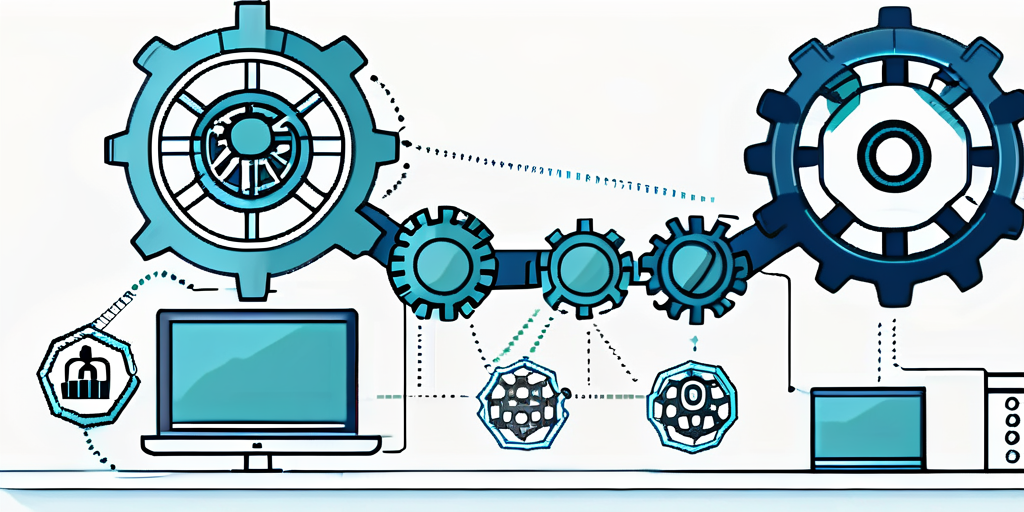In recent years, the software development landscape has undergone a significant transformation. Traditional approaches to application development and deployment have given way to more agile and efficient methodologies. One such methodology that has gained traction is DevSecOps – an approach that combines development, security, and operations to ensure the delivery of secure and high-quality software at speed. In this introductory guide, we will explore the key concepts, principles, and benefits of DevSecOps.
Understanding DevSecOps
DeSecOps, short for Development, Security, and Operations, integrates security practices into the software development lifecycle from the very beginning. It emphasizes a proactive and collaborative approach, where security is not an afterthought but an integral part of the development process. By aligning development teams, security teams, and operations teams, DevSecOps aims to create a culture of shared responsibility and continuous improvement.
DevSecOps is not just a buzzword; it is a mindset shift in the software development industry. In today’s digital landscape, where cyber threats are rampant, organizations cannot afford to neglect security. DevSecOps recognizes this and ensures that security is ingrained into every step of the development process.
Definition and Importance of DevSecOps
DevSecOps can be defined as the integration of security practices and principles into the software development process. In traditional development approaches, security measures are often added as an afterthought, leading to vulnerabilities and potential breaches. DevSecOps, on the other hand, places security front and center, ensuring that security measures are implemented throughout the development lifecycle.
But why is DevSecOps important? The answer lies in the ever-evolving threat landscape. Cybercriminals are constantly finding new ways to exploit vulnerabilities in software systems. Organizations that fail to prioritize security in their development processes become easy targets for these malicious actors. DevSecOps, with its emphasis on security from the start, helps organizations mitigate risks, protect sensitive data, and build trust among their users.
The Evolution from DevOps to DevSecOps
DevSecOps is an evolution of the DevOps philosophy. DevOps, which stands for Development and Operations, aims to bridge the gap between development and IT operations, enabling faster and more efficient software delivery. DevSecOps takes this concept further by adding security as an essential component in the process. It acknowledges that security should not be a separate function but an integral part of the software development lifecycle.
DevOps has revolutionized the software development industry by promoting collaboration, automation, and continuous integration and delivery. However, it became evident that without proper security measures, the benefits of DevOps could be overshadowed by the risks posed by cyber threats. This realization led to the birth of DevSecOps.
While DevOps focuses on collaboration and automation, DevSecOps adds an extra layer of security checks and measures. By integrating security experts into the development process, organizations can identify and address vulnerabilities early on, reducing the likelihood of security breaches. This proactive approach ensures that security is not an afterthought but a fundamental aspect of the software development lifecycle.
DevSecOps is not just a set of tools or practices; it is a cultural shift that requires organizations to embrace a security-first mindset. It encourages developers, security professionals, and operations teams to work together, share knowledge, and take collective responsibility for the security of the software they deliver.
In conclusion, DevSecOps is a crucial evolution in the software development industry. It recognizes the importance of security and integrates it into every stage of the development process. By adopting DevSecOps practices, organizations can enhance their security posture, reduce vulnerabilities, and build robust and trustworthy software systems.
Key Principles of DevSecOps
DevSecOps is guided by several key principles that underpin its success. Let’s take a closer look at some of these principles:

Continuous Security
One of the fundamental principles of DevSecOps is continuous security. Unlike traditional approaches where security measures are implemented at the end of the development cycle, DevSecOps ensures that security is an ongoing process. By conducting regular security scans, penetration tests, and code reviews, organizations can identify vulnerabilities early on and address them promptly.
The goal is to build a secure foundation upon which software can be developed, tested, and deployed without compromising security. Continuous security not only reduces the risk of security incidents but also enables organizations to respond quickly to emerging threats.
For example, organizations can implement automated security checks that run continuously throughout the development process. These checks can include vulnerability scanning tools that analyze the code for any known security issues, as well as penetration testing to identify potential weaknesses in the system. By integrating these security measures into the development pipeline, organizations can ensure that security is considered at every stage of the software development lifecycle.
Shared Responsibility
In a DevSecOps environment, security is not the sole responsibility of the security team. Instead, it becomes a shared responsibility across development, security, and operations teams. By fostering a culture of collaboration and accountability, organizations can ensure that security considerations are integrated into every stage of the software development lifecycle. Developers become more aware of security best practices, and security experts contribute their expertise from the early stages of development, resulting in more secure software.
For instance, developers can receive training on secure coding practices to help them write code that is less vulnerable to attacks. Security experts can work closely with development teams to provide guidance on implementing security controls and conducting security testing. Operations teams can also play a role in ensuring that the infrastructure on which the software runs is secure and properly configured.
This shared responsibility approach not only improves the overall security posture of the organization but also fosters a sense of ownership and collaboration among teams.
Infrastructure as Code (IaC)
Infrastructure as Code (IaC) is a key principle of DevSecOps. With IaC, infrastructure is treated as code, enabling teams to automate the provisioning and configuration of infrastructure resources. This not only improves the speed and efficiency of software deployment but also ensures consistency and repeatability.
By defining infrastructure requirements as code, organizations can version control their infrastructure configuration, making it easier to track changes and roll back if needed. This approach also facilitates the implementation of security controls, allowing security practices to be codified and applied consistently across environments.
For example, organizations can use tools like Terraform or Ansible to define their infrastructure requirements in code. This code can then be stored in a version control system, allowing teams to track changes and collaborate on infrastructure configuration. By automating the provisioning and configuration of infrastructure resources, organizations can ensure that security controls are consistently applied and reduce the risk of misconfigurations that could lead to security vulnerabilities.
Furthermore, infrastructure as code allows organizations to replicate and scale their infrastructure as needed easily. This flexibility is particularly valuable in cloud environments where resources can be provisioned and deprovisioned dynamically.
The DevSecOps Lifecycle
The DevSecOps lifecycle encompasses several stages, each with its specific focus and objectives. Let’s dive into each of these stages:

Planning and Coding
In the first stage of the DevSecOps lifecycle, extensive planning and design take place. Development teams work closely with security experts to identify potential security risks and define appropriate security controls. Security requirements are documented and integrated into the development process.
During this stage, developers write code following secure coding practices and utilize secure development frameworks. Code reviews and static code analysis tools are employed to identify and rectify any potential security vulnerabilities.
For example, developers may use techniques such as input validation, output encoding, and proper error handling to prevent common security issues like cross-site scripting (XSS) and SQL injection attacks.
Furthermore, secure development frameworks, such as OWASP (Open Web Application Security Project) Top 10, provide a set of guidelines and best practices to help developers build secure software from the ground up.
Building and Testing
The building and testing stage involves compiling the code, testing it for functionality, and ensuring its compatibility with the target environment. It also includes security testing to identify any vulnerabilities in the software.
Automated testing tools, such as static application security testing (SAST), dynamic application security testing (DAST), and software composition analysis (SCA), are used to identify security flaws and vulnerabilities. These tools scan the codebase and dependencies, looking for known security issues and vulnerabilities.
For instance, SAST tools analyze the source code for potential security weaknesses, such as insecure cryptographic algorithms or insecure file handling. DAST tools, on the other hand, simulate real-world attacks to identify vulnerabilities that may only be exploitable in a running application.
Security test results are analyzed, and necessary actions are taken to address any issues that are discovered. This may involve fixing the code, updating dependencies, or implementing additional security controls.
Release and Deployment
Once the software has been thoroughly tested and validated, it is ready for release and deployment. This stage involves packaging the software, configuring deployment environments, and orchestrating the deployment process.
Security controls, such as access controls, encryption, and authentication, are implemented to ensure the secure deployment of the software. Access controls restrict unauthorized access to sensitive resources, encryption protects data in transit and at rest, and authentication verifies the identity of users and systems.
Continuous monitoring and logging mechanisms are also put in place to detect and respond to any security incidents during the deployment process. These mechanisms provide visibility into the system’s behavior, allowing security teams to identify any suspicious activities or anomalies.
Additionally, organizations may utilize containerization technologies, such as Docker, to create isolated and secure environments for deploying their software. Containerization helps ensure that the software runs consistently across different environments and minimizes the risk of configuration drift or dependency issues.
Operation and Monitoring
The final stage of the DevSecOps lifecycle involves the operation and monitoring of the deployed software. Continuous monitoring and logging enable organizations to identify and respond to security incidents in real-time.
Security incident response plans are developed to ensure a rapid and effective response to any security breaches. These plans outline the steps to be taken in the event of a security incident, including incident detection, containment, eradication, and recovery.
During this stage, organizations may employ security information and event management (SIEM) systems to collect and analyze security logs from various sources. SIEM systems help detect patterns and anomalies that may indicate potential security threats.
Furthermore, organizations may conduct regular penetration testing and vulnerability assessments to proactively identify any weaknesses in their systems. These assessments simulate real-world attacks and provide valuable insights into the security posture of the software.
This stage emphasizes the importance of analyzing and learning from security incidents to further enhance the security of future software releases. Lessons learned from previous incidents can be used to improve security controls, update security policies, and educate development teams on emerging threats and vulnerabilities.
Benefits of Implementing DevSecOps
Organizations that adopt DevSecOps stand to gain several benefits. Let’s explore some of these benefits:

Enhanced Security
By integrating security into the software development process from the very beginning, organizations can significantly enhance the security of their software. Identifying and addressing vulnerabilities early on reduces the risk of data breaches and cyber attacks.
DevSecOps also enables security best practices to be implemented consistently across development teams. This consistency ensures that security measures are not overlooked or bypassed, leading to a more secure software ecosystem.
Faster Software Releases
DevSecOps emphasizes automation and collaboration. By automating security tests and integrating security practices into the development process, organizations can significantly reduce the time required to release software.
Traditional security testing methodologies often involve time-consuming manual processes, which can cause delays in software delivery. DevSecOps streamlines the process by automating security checks and testing, allowing organizations to deliver software faster without compromising security.
Improved Compliance
For organizations operating in regulated industries, compliance with security and privacy standards is crucial. DevSecOps promotes a continuous compliance mindset by integrating security and compliance requirements into the development process.
Regular security assessments and adherence to security policies not only ensure compliance with industry regulations but also build trust among customers and stakeholders. By incorporating compliance as a core principle, organizations can maintain a competitive edge and demonstrate their commitment to security.
As the software development landscape continues to evolve, embracing DevSecOps can help organizations stay ahead of the curve. By integrating security into the development process, implementing continuous security measures, and fostering a culture of shared responsibility, organizations can deliver secure and high-quality software at speed. With enhanced security, faster software releases, and improved compliance, DevSecOps offers numerous benefits that are indispensable in today’s digital world.
Ready to elevate your organization’s cybersecurity posture and ensure compliance with industry standards? Blue Goat Cyber, a Veteran-Owned business, specializes in B2B cybersecurity services tailored to your needs. From medical device cybersecurity and penetration testing to HIPAA, FDA Compliance, SOC 2, and PCI penetration testing, we’re dedicated to securing your business and products against threats. Contact us today for cybersecurity help! and partner with a team passionate about protecting your operations.


